Google receives over 63,000 searches per second on any given day. Through the practice of SEO, a business is able to place its information at the top of those billions of daily searches, making it much more likely that a potential customer will visit their website for more information. But how do you go about the process of SEO? We breakdown the basics to demystify this critical component of any digital marketing strategy.
VOCABULARY LESSON
There are a few terms & acronyms you’ll need to know before you can jump into understanding the processes of SEO. So, let’s begin:
- SEO: search engine optimization; tactics used to organically push websites and pages to the first page of Google and other search engines.
- Black Hat SEO: unethical tactics to attempt to reach the first page of search engines; can result in your website being banned from search engine results pages
- White Hat SEO: ethical tactics to attempt to reach first page of search engines
- SERP: search engine results page… the page that pulls up all results related to your search query in Google (or Bing, if that’s your search engine of choice)
- Crawlable: a crawlable site allows search engine bots to visit its web pages to index its information
- Indexing: a search engine’s process of collecting and categorizing website data
- Keyword: a word or short phrase used to identify the focus of the web page
- Keyword Density: the ratio at which a keyword is used in the page’s content compared to the total number of words; ideal keyword density is around 2%, but there is no perfect number and trying to force-fit a keyword in will just make your content read poorly
- Duplicate Content: reusing content across multiple pages; will often result in negative SEO impact (Google doesn’t like reading the same thing twice any more than you do)
- Alt Tag: (also known as alt text) a word or short phrase used to label an image on a web page; allows search engines to “read” an image, since an image itself would not otherwise translate into an optimizable language
- Title Tag: represents the page title as read by search engines; is seen in the tabs of a browser and as the title of a web page on SERP
- Meta Description: a page description found under the title tag on SERP; does not directly affect rankings, but allows viewers to see what page is about, increasing click-through rates
- Links:
- Internal: links on your webpage that link to other pages within the same website
- Outbound: links on your webpage that link to other pages outside of the same website
- Backlinks: links on another webpage that link to a page on your website
- Stop Words: filler words commonly found in phrases, that can usually be removed from key phrase (Examples of this would be “the”, “of”, “for”, “an”… you get the picture.)
TACTICS
Now that you understand the terminology, let’s jump into implementation! The two methods we’re going to break down are On-Page SEO and Off-Page SEO.
ON-PAGE SEO
Key pieces of quality on-page SEO include site speed, mobile optimization, content and an up-to-date site map.
SITE SPEED
Better site speed allows search engines to crawl your page faster (and is less frustrating for your audience) so improving site speed is an effective way to increase your overall on-page SEO. Here are a few steps to faster site speed:
- Utilize tools like Google Page Speed to automatically apply web performance best practices to the pages of your site.
- Caching temporarily stores copies of web pages a user has visited, requiring less bandwidth for them to return to it. Install caching on your website to prevent lag from multiple users on your site at one time.
- Larger images take longer to load, so reduce the size of your image files for faster site speed; luckily you can shrink images down significantly without losing quality.
- Minimize your RTTs (the number of requests made when a user accesses your site). Each piece of your page that needs loading is requested individually, so the fewer that need to run, the better.
- A few ways to do this
- Combine CSS and JavaScript
- Minimize DNS lookups
- Minimize redirects
- A few ways to do this
- Turn off unused plugins or extensions because each one requires individual loading that bogs down your site speed.
MOBILE OPTIMIZATION
In 2017, mobile devices accounted for more than 50% of all online searches. As mobile users increase year over year, the likelihood of your customers looking for you from their smartphone is high and getting higher. A mobile friendly or mobile responsive site isn’t enough anymore, mobile optimization is crucial. But what does that mean? We’ve provided a few key features for mobile optimized sites, does your website check all the boxes?
- Simplified navigation that’s touch screen-friendly
- Larger buttons to allow easier clicking
- Easy scrolling so viewers can browse your website without accidental clicks
- Avoid the need for typing
- Condensed copy for less scrolling to read
- Avoid pop-ups
- Resize images & videos to fit smaller screens
If your customers are more likely to visit your site from their mobile device, you may even consider a mobile-first design: designing your site around mobile (typically in a single-column layout, which can then expand for desktop browsing).
SITEMAP
Once your website’s been constructed, you’ll need to create a Sitemap. Simply put, a Sitemap is a file containing all of your webpage’s URLs. It should be easy to find so search engines don’t have to work hard to crawl it. The most common place to create your Sitemap will be in Google Search Console (formerly Webmaster Tools), but other options are also available.
CONTENT
The biggest piece of your on-page SEO is content. Your site should be filled with relevant content, but it’s not just about creating content filled to the brim with keywords, but putting it together in a way that’s easy and enjoyable for your audience to read. Let’s start there…
- Readability: The term itself is pretty self-explanatory, but something to keep in mind: Google “reads” at about a fifth-grade level, so in order to improve readability, follow a few very simple steps
- Keep your sentences short
- Don’t use too many big words—there are exceptions to this rule of course, but if you’re writing for the average reader, ditch the thesaurus and keep it uncomplicated simple (so long as it doesn’t take away from the personality of the content).
- Length: 300 words is your minimum, but the longer the better. The more content you provide, the more opportunities search engines have to crawl and index your page based on keywords.
- Exclusions to this rule: website home pages, gallery pages, etc. (this is an age-old battle between SEOs and web designers… general rule of thumb: don’t sacrifice design for content because even if it makes Google happy, it will deter people from visiting and that’s the real goal in all of this)
- Keywords: You’ll build your page’s SEO around this word or phrase. You’ll incorporate it in copy, title tags, meta descriptions and alt tags.
- Heading Tags(don’t just bold!): Heading tags break up your content to make sure it’s easy to digest for readers and search engines alike. Bolding a word or phrase, followed by a paragraph won’t cut it in Google’s eyes. You’ll need to use H2, H3, etc. tags so search engines can read it as an actual heading.
- Images (Alt Tags): Use alt tags as an opportunity to incorporate your keyword in another place. Be sure all images on each page include your keyword.
- Slugs: This is the piece of your page’s link that follows the main site URL (website.com/page-slug). Keep it short, incorporate your keyword into it if you can, and exclude stop words as much as possible.
- Links: Linking your page to other pages either within the same website or to other sites creates associations between your content and other pages’ content, which builds relevance for your page.
- Linking to pages on other sites also encourages others to do the same for you, building your backlinks, which looks great in Google’s eyes. The more places pointing to your site, the better.
OFF-PAGE SEO
Alongside content, links are the leading ranking factor in all of SEO. Link building is the process of accumulating links from outside sources that point back to your website. There are a number of ways to approach link building, but let’s cover the most common:
- Manually created links are links that you generate through outreach. You can reach out to bloggers, journalists and influencers to request they create or share content that links back to your website. This is a pretty time-consuming task, but can be effective once you’ve developed strong relationships.
- Self-created links are link you put out on your own through various platforms.
- Directories: the most common directories include Google My Business, Bing Places and Yelp. There are oftentimes industry-specific directories you can utilize as well.
- Blog comments & forums: Joining the conversation on relevant blogs and forums allows you the chance to weigh in on what your customers are talking about, while incorporating an additional link back to your website.
- Guests posts (other blogs): Acting as a guest blogger on an already established site leverages that blogger’s audience for you to get in front of.
- Advertorials: A long-form advertisement, often written in the form of an article or editorial and promotes a product or service.
- Profiles: Much like directories, creating user profiles across various online networks gives you the opportunity to create a “personality” behind your brand, and link back to your website.
Ready to take your business to the next level? Contact us. We’re here to help.

